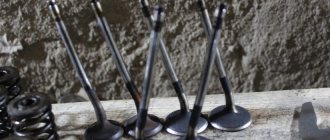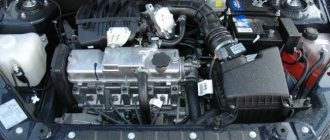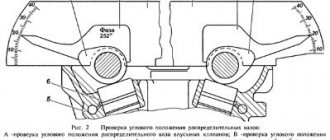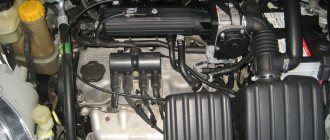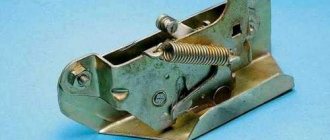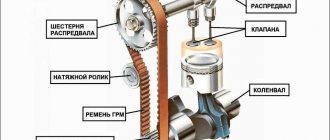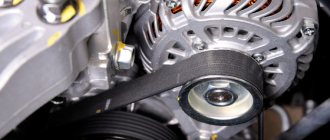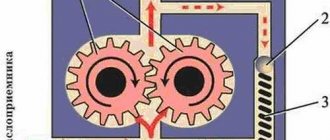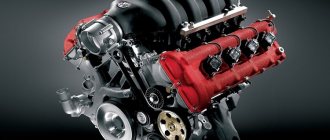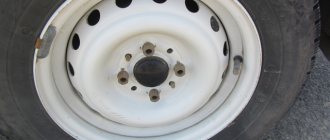Updated: 01/11/2022
Domestic cars remain the most popular in Russia. Buyers are practically forced to vote with their wallets for Ladas due to the lack of any reasonable alternatives. This is not to say that AvtoVAZ’s creations are available to buyers in the Russian Federation cheaply. Some configurations of domestic cars go far beyond a million rubles. And although it sounds paradoxical, someone still buys them. But today we will talk not so much about the marketing part, but about the technical part. If you are buying a Lada for a million, you would like to be sure that it will not break down due to some annoying error in the service.
In our article today we will look at which VAZ engines do not bend valves when the timing belt or chain breaks or jumps. And you will be surprised, but there are such engines in the line of domestic manufacturers. Unfortunately, until 2022, most engines still bent valves due to timing belt problems, but in new Lada engines this problem has actually been corrected.
So today we will look at several extremely important questions:
- VAZ engines on which the valves do not bend when the timing belt or chain breaks;
- Methods of protection against bending of valves in domestic engines;
- Specific examples of belt breaks on modern engines;
- How much does it cost to repair a VAZ engine after a broken timing belt.
Go!
On which VAZ engines does the valve bend, and on which ones does not?
Welcome, friends, to the DIY auto repair website. Experienced car enthusiasts know that a broken timing belt can lead to dire consequences. In particular, there is a high risk of “meeting” valves that have already come out of their seats and pistons rising by inertia.
Which VAZ engines bend valves
The result is deformation of vital engine elements, as well as an urgent need to visit a service station and carry out major repairs. But does the valve always bend when the timing belt breaks? Should we be afraid of this?
Pistons of 8-valve engines
We are talking about engines 2111 and 21114. They are injection engines, and the shape of the pistons was inherited from the carburetor engine 2110.
ShPG elements (pistons) 2110-1004015
Actually, the same pistons were installed on three different 8-valve valves: 2110, 2111 (1.5 8v), 21114 (1.6 8v). Piston article number – 2110-1004015.
Two deep recesses ensure that any of the valves, intake or exhaust, cannot “meet” the piston surface even if the timing belt breaks.
The standard 8-valve valves on the VAZ-2112 do not bend the valves, no matter what some owners say. Sometimes an “improved” camshaft is installed, and if the valves fly out more than VAZ specifies, then there will be no guarantee against bending. Therefore, follow the regulations for replacing the timing belt on an 8-valve engine.
And the following is provided:
We give values taking into account the thermal gap. Whoever exceeds them will receive the result.
A little history
The new “tens” were immediately equipped with 8-valve engines with volumes of 1.5 and 1.6 liters. The first power units (from the perspective of the problem we are describing) were ideal, and the valves did not bend. Although earlier models like eight and nine with a volume of 1.3 had this problem. The reason was that the piston structurally could not “meet” the valves.
Over time, a more modern VAZ 2112 model appeared in the “ten” family, equipped with a one and a half liter engine with a 16-valve engine. It was from this moment that the problems began. Many car enthusiasts and specialists could not understand why the valve bends.
In fact, the reason was in the design of the power unit. On the one hand, the appearance of a 16-valve head made it possible to increase the car’s power to 92 “horses,” and on the other, a broken timing belt invariably led to a collision of pistons and valves, as well as deformation of the latter.
After that, I had to go to a service station and have the car undergo expensive repairs. The design fault lay with the pistons themselves, which lacked the necessary recess. As a result, the timing belt break always ended in the same way.
Main characteristics of the motor
All engines that were installed on the vehicle had approximately the same characteristics and design features. So, the motor is easy to service and repair with your own hands. Let's look at the main technical characteristics of the VAZ 2114 engine:
VAZ 2111
| Name | Index |
| Volume | 1.5 liter (1499 cm3) |
| Number of cylinders | |
| Number of valves | |
| Fuel | Petrol |
| Injection system | Injector |
| Power | 77 hp |
| Fuel consumption | 8.2 l/100 km |
| Cylinder diameter | 82 mm |
| Name | Index |
| Volume | 1.6 liter (1596 cc) |
| Number of cylinders | |
| Number of valves | |
| Fuel | Petrol |
| Injection system | Injector |
| Power | 81.6 hp |
| Fuel consumption | 7.6 l/100 km |
| Cylinder diameter | 82 mm |
VAZ 11183
| Name | Index |
| Brand | |
| Marking | 1.6 8V |
| Type | Injector |
| Fuel | Petrol |
| Valve mechanism | 8 valve |
| Number of cylinders | |
| Fuel consumption | 9.6 liters |
| Piston diameter | 82 mm |
| Resource | 200 – 250 thousand km |
VAZ 21124
| Name | Index |
| Volume | 1.6 liter (1599 cc) |
| Number of cylinders | |
| Number of valves | |
| Fuel | Petrol |
| Injection system | Injector |
| Power | 89.1 hp |
| Fuel consumption | 7.0 l/100 km |
| Cylinder diameter | 82 mm |
VAZ 21126
| Name | Index |
| Volume | 1.6 liter (1597 cc) |
| Number of cylinders | |
| Number of valves | |
| Fuel | Petrol |
| Injection system | Injector |
| Power | 97.9 hp |
| Fuel consumption | 7.2 l/100 km |
| Cylinder diameter | 82 mm |
Engine VAZ 2114
All engines were equipped with 5-speed manual transmissions. Engine volume ranges from 1.5 to 1.6 liters. This car was not equipped with a large power unit. The average engine power of the VAZ 2114 is 85 horsepower.
Updated car engine
A similar oversight was taken into account and more advanced 16-valve 1.6-liter engines were installed on new VAZ 2112 cars. Structurally, the power units were not very different, but one feature was still present. In the new engine, the pistons had certain recesses, so the problem described above was eliminated.
Over the next few years, car enthusiasts began to forget about bent valves and became accustomed to the reliability of the new 16-valve engines. But the updated Priora model with a 1.6-liter power unit was an unpleasant surprise - the valves also bent when the timing belt broke.
At the same time, the final repairs were much more expensive. On the other hand, the developers made the belt as wide as possible to minimize the likelihood of the belt breaking. The only unlucky ones were those car enthusiasts who received a defective belt or those who did not take care of their “iron horse” at all.
Unfortunately, even on the new 1.4-liter Kalina engines with 16 valves, repairs cannot be avoided if the belt breaks while driving. So monitoring the state of this node is mandatory.
On which VAZ engines does the valve bend, and on which ones does not?
Let’s draw intermediate conclusions and also highlight the most “dangerous” and “safe” models from the perspective of probable valve deformation in the event of belt damage:
1. Which VAZ engines bend valves? This category includes car engines of the following model range - 21127, 21116, 2112, 1194.
2. Which VAZ engines do not bend valves? More reliable are the engines of such VAZ models as 1183, 21114, 21083, 21124, 21126 (they bent until 2013, but not now), 21128.
The current problem has caused a lot of controversy among car enthusiasts. Many owners of “problem” VAZs are interested in what to do to prevent the valve from bending. In fact, there are several recommendations.
They are as follows:
1. First, try to periodically assess the condition of the timing belt and replace it at the first sign of damage. The appearance of cracks, contact with engine oil on the surface, excessive stretching, peeling of the edges - all this is a reason to install a new timing belt and not wait for a break.
2. Secondly, if the engine is expected to be repaired, then you can change the pistons, and in some cases, the crankshaft. In addition, some experts recommend (as a solution) installing a new camshaft.
But here, of course, you can’t do without consulting specialists. After this, flashing and removal of the catalyst may be necessary.
If you get a car with bent valves, then don’t despair ahead of time. The ideal solution would be maximum attention to the engine and more frequent replacement of the timing belt. Even this will be enough to minimize risks.
As for replacing components and expensive repairs, these costs, as a rule, are not justified. Good luck on the roads and of course no breakdowns.
Source
Let's sum it up
VAZ cars can hardly claim to be the optimal and best solutions even in their price range. But today Granta or Kalina often turn out to be the only possible purchase for a Russian family. The sharp increase in prices for other new cars is reflected by the need to buy domestic developments. It should be noted that AvtoVAZ is doing a tremendous amount of work to update its equipment, but even this work has not yet given the desired results.
In modern VAZ lines there is only one own engine that does not bend the valve. This is a 98-horsepower unit on the Priora. However, here everything is arranged in such a way that you may not be lucky, so 16 valves will have to be replaced after a belt break. In other engines, valves and other parts will definitely have to be changed after a belt break. It is much cheaper to monitor the condition of the roller and belts by replacing all these parts in a timely manner.
Why does the valve bend when the timing belt breaks?
You're driving along in your wonderful car, and suddenly there's a knock and the car stops. This is how the belt breaks. Everything would be fine if the belt just broke, but on some engines the valves immediately bend. Why is this happening?
The fact is that when the timing belt breaks, the camshaft, which drives the valve, stops, and the internal combustion engine crankshaft continues to rotate and push the pistons. The valves that are supposed to close remain in the lowered position and the rising pistons meet them.
How valves bend:
- The timing chain or belt has broken.
- The camshaft has stopped rotating.
- The crankshaft continues to rotate and push the pistons.
- Valves that go down and pistons that go up meet at top dead center (TDC).
- Pistons are stronger than valves, so the pistons bend the valves.
That is, if the timing belt breaks, the camshaft stops abruptly, and the engine crankshaft (even if it was immediately turned off) continues to rotate. The camshaft stops instantly and has no residual rotation because the return springs brake its cams. While the internal combustion engine crankshaft is rotating, the pistons will hit the open valves. Although the material of the pistons is stronger and more durable, it happens that the pistons themselves break when they meet the valves.
Tuning and its influence on “stickiness”
VAZ is an excellent option for tuning a car, which is what many owners use. One of the main types of engine tuning is to increase its power, and this is done in the same way that designers use - by ensuring better filling of the cylinders with the air-fuel mixture. To do this, you just need to install a tuning camshaft instead of the standard one - with a higher cam height.
But increasing power with the help of a tuning shaft also has a negative side - the valves extend from the seats at a greater distance, which means that the likelihood of them colliding with the pistons increases when the timing drive breaks. Therefore, such tuning makes even a “risk-free” engine “plug-in”.
In order not to make the engine “risky”, when tuning it is better not to make adjustments to the timing belt design, but if you decide to upgrade, you should be prepared to constantly monitor the condition of the drive.
Finally, we note that if the engine is “plug-in”, this does not mean that it is very problematic. With timely maintenance of the timing drive, the likelihood of a breakdown such as valve bending is very low and it may not occur throughout the entire period of operation of the vehicle.
Problems with the VAZ 21116 engine
This is an improved power unit from the VAZ 21114. The connecting rod and piston group was lightened by 40%, replacing the materials with aluminum alloy. If the belt drive breaks, the valve heel does not bend.
Engine design features
- the valve mechanism must be adjusted at intervals of 45,000 km;
- the oil filter needs to be changed more often than other models (10,000 km);
- rapid wear of the cooling system elements occurs;
- Frequent engine oil leaks occur due to depressurization of sealing gaskets;
- The clamping nuts on the exhaust exhaust pipe burst and need to be replaced with brass ones.
Typical faults
- Detonation during operation: measure the compression in each cylinder. A deviation of 1.0 atmospheres or more is a sign of valve burnout. A difference of up to 1.0 atmospheres is a sign of wear on the rings or damage to the sealing gasket.
- Unstable speed: diagnose the throttle position sensor, adjust idle speed.
- The engine temperature does not rise above 40°: the thermostat is faulty, replace it with a new one.
- Uncharacteristic knocks and noises when the engine is running: a metallic knock is a sign of a malfunction of the connecting rods and crankshaft bearings. Piston knocking is less common. To troubleshoot the problem, contact a service station for help.
On which engines do valves bend?
We present a list of cars of different brands and models in the table. Engines on the same machines can be different, so each brand will have its own table, in which there is a column indicating “bend” and a column indicating “do not bend”. So, let's go, let's start with the most popular cars in Russia:
VAZ timing belt broke
| Motor | Oppression? | Motor | Oppression? |
| 2111 1.5 16cl. | Yes | 2111 1.5 8kl. | No |
| 2103 | Yes | 21083 1.5 | No |
| 2106 | Yes | 21093, 2111, 1.5 | No |
| 21091 1.1 | Yes | 21124, 1.6 | No |
| 20124 1.5 16v | Yes | 2113, 2005 1.5 engineering, 8 classes | No |
| 2112, 16 valves, 1.5 | bending (with stock pistons) | 11183 1.6 l 8 cl. "Standard" (Lada Granta) | No |
| 21126, 1.6 | Yes | 2114 1.5, 1.6 8 cells. | No |
| 21128, 1.8 | Yes | 21124 1.6 16 cl. | No |
| Lada Vesta 1.6 with engine 21129 (106 hp) | Yes | ||
| Lada Vesta 1.8 with engine 21179 (122 hp) | Yes | ||
| Lada Kalina Sport 1.6 72kW | Yes | ||
| 21116 16 class. “Norma” (Lada Granta) | Yes | ||
| 2114 1.3 8 cells and 1.5 16 cl | oppression | ||
| Lada Largus K7M 710 1.6l. 8kl. and K4M 697 1.6 16 cl. | Yes | ||
| Niva 1.7l. | Yes |
Conclusion
A sudden break in the timing belt on a Lada Vesta has disastrous consequences for the engine. It is not always possible to prevent a rupture, but it is quite possible to reduce the risk of such a situation, subject to high-quality maintenance and installation of original spare parts.
If you detect one or more signs, do not hesitate to carry out a comprehensive diagnosis at a service station.
It is noticeable that VAZ specialists, working on the new Lada Vesta sedan, set out to ensure maximum reliability and trouble-free operation of the model. That is why the line of power units includes engines familiar from other Alliance cars. Of course, they have weaknesses, but all “childhood diseases” have long been defeated and by modern standards these motors are considered very reliable.
Engine tuning
Tuning version of the VAZ 2114 engine.
Tuning the VAZ 2114 engine is carried out typically for the entire series of power units installed on 2113-2115. As you know, there are two options for modifying the engine: mechanical and chip tuning. The modification scheme is quite simple, the mechanics are done first, and then the electronics. But many car enthusiasts only carry out chip tuning to reduce consumption, since the price of fuel is too high.
Chip tuning of the VAZ 2114 is carried out using special equipment and is aimed at increasing power or reducing fuel consumption. This type of work should be entrusted to professionals, since only they have the necessary skills and knowledge.
As for mechanical modifications, the scheme is standard. In case of complete modification of the motor, it must be completely disassembled. It is necessary to gain full access to the interior of the power unit. Next, the process of boring-honing and installation of new spare parts with light weight is carried out.
Installed turbine on a VAZ 2114 engine After assembly, it is recommended to install a tuning version of the cooling and exhaust system, since combustion will occur with the release of more heat than before. Standard oil will not be suitable for the VAZ 2114 engine after tuning, so it is recommended that the modification process be done by professionals.
Why does the timing belt break?
As the experience of breakdowns shows, belts do not break only because they are worn out or are of poor quality. There are several more reasons:
- belt wear (especially if there is even a slight misalignment and the belt touches the side of the pulley);
- if the crankshaft of the internal combustion engine is jammed;
- if the pump (the pump that circulates the coolant) has stalled;
- if the belt tension roller is jammed.
The new generation of motors often break down. This is due to the fact that they are being made more and more powerful. The distance between the valves and pistons located at top dead centers is becoming smaller and smaller. Therefore, even if the valves are slightly open and they did not have time to close before the pistons arrived, they are instantly bent.
Timing diagram Lada Kalina 8 valves
Another feature of the engine is the location of the water pump (pump), which is rotated by the same timing belt. That is, in case of coolant leaks or characteristic noise/whistle/hum in the timing drive area, checking the belt is mandatory. If the pump bearing crumbles and the belt comes off, then in addition to replacing the water pump housing and belt, you will also have to go through the cylinder head, removing bent valves from there.
AvtoVAZ uses a very reliable Gates belt as the original belt. Often the service life of the Gates belt is much higher than the service life of the pump and tension pulley of the Lada Kalina 8-valve engine.
Vehicle configuration
The Lada Kalina family was created on the VAZ 2108 platform. The progenitor of the new model received a significantly redesigned chassis, as well as the layout of the power unit and transmission. The angular shapes completely disappeared from the exterior; in general, it could be called modern and inviting. All hard plastic parts have been removed from the interior. The panels became soft and warm, this was especially noticeable in cars produced in 2010-2013. In general, a description of all the changes that the mother platform has undergone can take several pages, so let’s note the main thing: the car has become many times more convenient and safer than the Lada Samara.
From the very beginning of production, the station wagon was offered in 2 trim levels:
The first configuration had the following set of free options.
- Adjustable steering column.
- Central locking.
- Power windows for front doors.
- On-board computer.
- 14-inch wheels.
- Electric power steering (only in package 11173-140-40).
The luxury version, in addition to everything described above, was additionally equipped with air conditioning and an anti-lock braking system (ABS).
Presentation of the car at the factory
The cost of the top version without ABS in 2013 was 360,000 rubles. For an additional fee, it was possible to install front airbags, foglights and heated front seats. The price of such a package of options was from 25,000 rubles.
Since 2007, the Lada Kalina has been equipped with 2 naturally aspirated gasoline engines:
- VAZ 21114 - 1.6-liter, 8-valve, 81 horsepower;
- VAZ 11194 - 1.4-liter, 16-valve, 89 horsepower.
Depending on the model of the power unit, the station wagon was designated as Kalina 11173 or Kalina 11174. It is important to note that the 8-valve engine was installed only on cars in the “norm” configuration. The 16-valve engine was mainly installed on cars of the “luxury” configuration, but for an additional fee it could also be installed on the Kalina “norm”.
VAZ 2108 and VAZ 2109 - a whole era in Russian cars
Hatchbacks, which were popularly called “Chisels,” gained fame as reliable and durable cars; they were produced until our time, assembled in Ukraine for several years, but have completely lost their relevance in appearance and technology. Today you can buy on the secondary market an excellent version of the “Nine” of a completely new year of manufacture in perfect condition. The engine in this car has the following features:
- In the history of the model there were 1.1, 1.3 and 1.5 liter power units with a carburetor, as well as a 1.5 liter injection unit;
- all engines were protected from the influence of timing belt rupture, the valves in the power unit did not bend;
- the car had quite adequate engine reliability - this unit was the last one to break down in the car;
- All presented competitors at one time were distinguished by their advanced design, excellent comfort and other benefits.
At the very beginning of their production, VAZ 2109 and 2108 cars were a real revolution in the domestic automotive industry. Buyers of such cars have become real lucky ones in the eyes of their acquaintances and friends, exactly the same as buyers of the latest Mercedes models today. And there were certain logical reasons for this, such as the incredible reliability of the main components.
Engine 126 has catalog number 21126100026030, sells for about 107,000 rubles, engine 127, respectively, has catalog number 21127100026030, its price is slightly higher by 3-5 thousand rubles. The price on the secondary market will be significantly lower (up to 20-25 thousand rubles), but the savings will not pay off - a used “engine” can last no more than 1000 km, this is a real lottery.
How to find out what engine is in a Priora
You can find out by looking at the plate on the left glass of the rack, where the engine number is written on the edge. From it you can understand the 8-valve unit, or 16. You can also recognize the modification 21126 or 21127.
How do you know if the valves on a specific make and model of car are bent?
This is actually a good question, and all drivers need to know the answer. Be prepared, in the event that the timing belt or timing chain breaks, for repairs such as replacing valves, adjusting them, and so on, or, knowing that it does not bend, do not worry again, but carry a spare timing belt with you (if Belting).
If the owner's manual for a particular make and model says it won't bend and you don't trust it, or it doesn't say this information at all, there is a practical method for calculating whether the valves on that machine will bend.
In order to find out, you will need:
- remove the casing;
- remove the timing belt;
- set the first piston to TDC;
- slowly rotate the camshaft 720 degrees (that’s two full turns). If the valve does not rest against the piston, it means it does not reach it.
- set the second piston to TDC;
- Also, turn the camshaft 2 full turns. If the piston does not touch the valve, then everything is fine.
What is a “plug-in engine”?
This concept characterizes the likelihood of a collision between pistons and valves, as a result of which the latter are damaged - they bend.
This situation occurs when the timing drive breaks, when the gas distribution mechanism stops, but the crank continues to work by inertia.
“Plug-in” and “non-plug-in” power units are available in the lineup of almost all automakers, including VAZ. At the same time, the second engine option, naturally, is a higher priority when choosing a car.
If we consider AvtoVAZ products, then this manufacturer’s line of power plants is quite extensive, and in some engines, when the timing drive breaks, the valve bends, while in others such a breakdown does not occur.
The problem when choosing to purchase a VAZ car is the fact that the same model can be equipped with both “plug-in” and “non-plug-in” units, which can confuse the buyer.
See below for which engines are installed on some VAZ models.
It is worth noting that the type of timing drive affects the likelihood of valve bending. For example, on the VAZ of the classic family (VAZ-2101-2107) and also the Niva, only plug-in engines were installed. But the engines of these cars use a timing chain drive, which is highly reliable. Therefore, on classic VAZ and Niva, the problem of valve bending due to a collision with the piston is, in fact, not relevant due to the low probability of its occurrence.
Starting from the VAZ-2108 and ending with the latest models - Priora, Granta, Kalina, etc., only a timing belt drive is used. So it can break off and the damage that the motor receives depends on whether it is “plug-in” or not.
Useful tips on the topic
Following the recommendations will make life easier for the driver and the engine of his car:
- find out whether the valves in your car’s engine are bent using a table, a reference book, or with your own hands;
- Carry a spare timing belt with you;
- buy a good quality belt (it’s better to always use the same brand);
- periodically check the belt tension and conduct a visual inspection for cuts, burrs, and detachments of ropes;
- when buying a used car from a stranger, it is recommended to change the timing belt, even if the former owner said that he recently replaced it;
Problems with the VAZ 21127 engine
This is an improved model from the VAZ 21126. Innovations include a new intake system, the shape of a resonance chamber and adjustable dampers.
In order to eliminate floating speed, the mass air flow sensor was replaced with two new sensors: DBP and DTV.
Like the previous type of engine, the VAZ 21127 bends the valve when the belt breaks.
Peculiarities
- difficulty starting the engine is caused by irregularities in the timing;
- due to low pressure in the fuel system, air leaks, the engine does not operate stably;
- a burnt gasket is a source of engine power loss;
- wear of the piston rings is the cause of increased fuel and engine oil consumption.
The motor also bends the valve when the belt breaks. The problem can be solved by replacing the pistons with a plugless type.
Typical faults
- ICE tripping at idle and under load;
- premature failure of the ignition coil;
- errors in the antifreeze temperature sensor in the cooling system.
Ways to solve the problem
Since the collision of pistons with valves has quite serious negative consequences, many car enthusiasts are interested in whether it is possible to influence this situation.
There are several methods that allow you to convert a valve-bending motor into a “plug-inless” one.
The simplest of them is installing pistons with grooves. By the way, on some VAZ engines this is how the problem with “sticking” is solved.
On the bottom of such pistons there are special recesses for valve plates. Due to this, the latter in the open position do not come into contact with the pistons installed at TDC.
But not all engines can be modernized in this way, for the reason that it is not always possible to find pistons with factory-made grooves to replace the “original” ones.
The second method is to independently make grooves on the piston. This method is suitable for those who have not found replacement “non-stick” pistons. But this method has a significant drawback - it is very difficult to make identical recesses on all pistons. As a result, an imbalance in the weight of the pistons may occur, which will affect the service life of the crankshaft. Also, grooves of different sizes can cause different compression in the cylinders, and this problem cannot be eliminated.
The third method is to increase the height of the combustion chamber. This is done by installing 2-3 gaskets under the head of the block. This method has a negative side - an increase in the volume of the combustion chamber, which entails a drop in compression, and as a result - a decrease in power and an increase in fuel consumption.
Renault-Nissan HR16DE-H4M
The production of this power unit began in 2006. In general, the engine, which still remains the most powerful in the Vesta line (the output of the 1.8-liter unit is questionable), is considered very reliable and is capable of driving about 250,000 km to the capital.
The Renault-Nissan HR16DE-H4M engine is the most powerful in the Vesta line.
Focused on AI-95, but easily “digests” the 92nd. In addition, its timing system uses a chain that is reliable, so Vesta owners should not worry about its stretching too early.
The timing chain in the Renault-Nissan HR16DE-H4M engine is more reliable than the belt.
Problems with the VAZ 21127 engine
The VAZ 21127 engine is a slightly modified and modified VAZ 21126 power unit. The differences lie in the installed intake system, equipped with a resonance chamber with the ability to adjust its volume due to controlled dampers.
The VAZ 21127 engine is a modernized VAZ 21126.
Instead of the mass flow sensor, the designers installed DBP+DTV, which eliminated the problem with floating speed. Like its predecessor, this engine also bends the valve when the timing belt breaks.
resource, parameters, photos and videos
AvtoVAZ is developing its 16-valve engines gradually, that is, step by step. When the updated Kalina family appeared in 2013, buyers were perplexed as to why they offered a 106-horsepower engine in manual versions, which differed little in design from the usual Priora engine.
The new engine was equipped with resonant supercharging, and it seemed that its presence would only have disadvantages: reliability was reduced, there was no way to connect the cable drive. But it turned out that the new engine was no worse than its predecessor: the mass air flow sensor often breaks down, and the DBP and DTV sensors almost never. There is no MAF sensor in the design of the 27th engine, which is the secret of increased reliability.
By the way, Lada Vesta with a Nissan engine is getting ready for release!
Why was the 27th engine replaced with the 29th?
The VAZ-21127 engine was good for everyone, except for one thing - it complied with Euro-4 standards. For Vesta sedans produced from November 2022, this option would not be suitable. It was necessary to solve a difficult problem: to improve the environmental class without increasing the volume and without losing power. And as a result, a new family of 16-valve engines appeared in the VAZ arsenal. We are talking about motors 21129 - they really meet the latest environmental standards.
The first Vesta engine, produced by VAZ
To move to the Euro-5 standard, engine 21127 had to be modified:
- The resonant intake system, as well as the exhaust system, have been completely redesigned;
- The ECU controller (ECM) has received new firmware - even the algorithm that regulates the volume of the resonant chambers has been changed;
- Engines 21127 and 21129 have slightly different compression ratios - 11.0 versus 10.45;
- The engine suspension was also improved: it became possible to mount it on a subframe.
It is clear what kind of engine the Lada Vesta would have had in 2022 and later if not for the transition to Euro-5. It would be the VAZ-21127 internal combustion engine, but with a modified suspension. And now we see that almost everything has been improved. As they say, changes are obvious.
What happened to the resource?
The resource value for the VAZ-21127 engine is 200 thousand km. In reality it is more. The engine must run all these “thousands” without replacing parts: only the belt tension is checked, the oil is changed, and there is no need to replace the timing belt.
Find out more about whether valves bend in a Lada Vesta engine here.
There is no need to “adjust the valves,” since the 16-valve engine is equipped with hydraulic compensators. Everything that is said here also applies to the latest VAZ development - the 21129 engine.
Note that the 27th and 29th engines do not differ much, while the second of them is operated in a more gentle mode. And this means that its resource will be at least no less than that typical for the ICE “21127” - 200 thousand and above!
